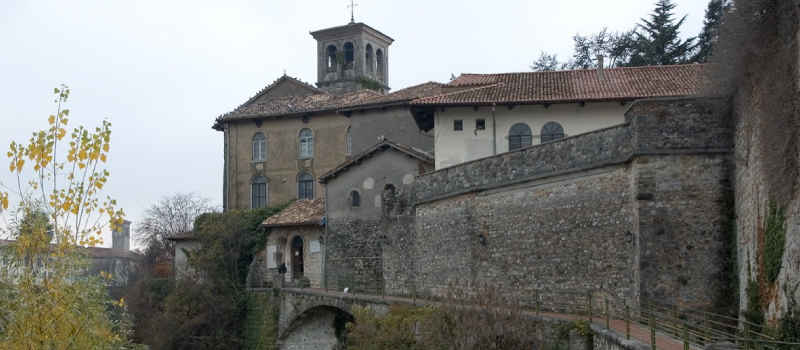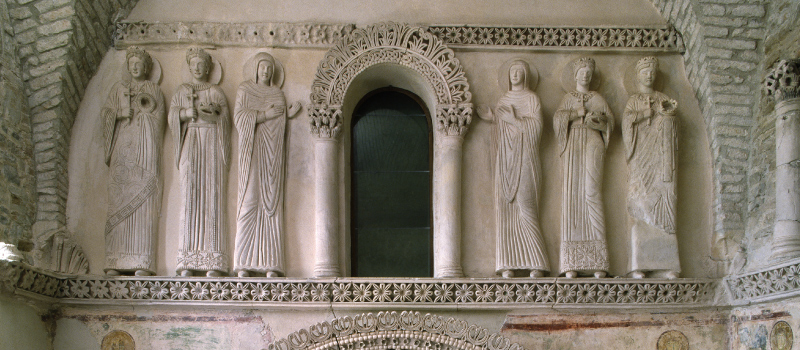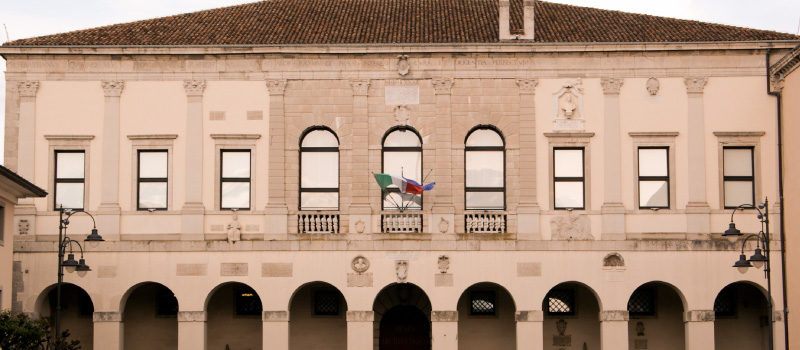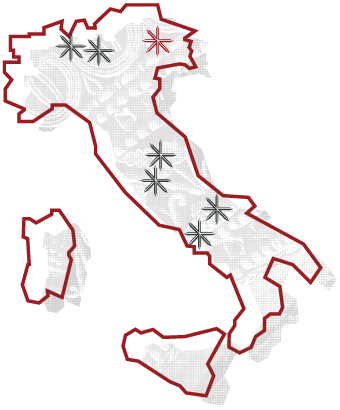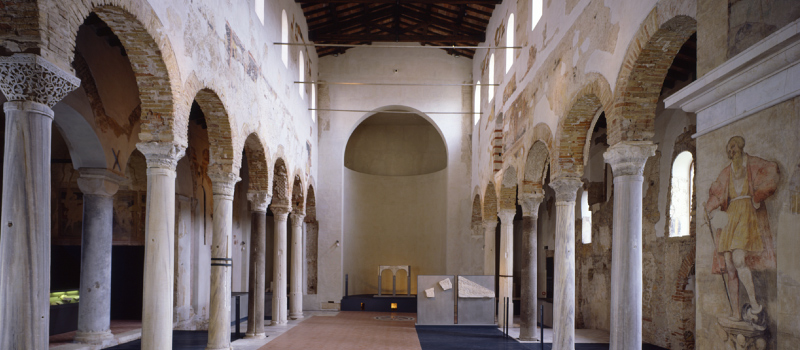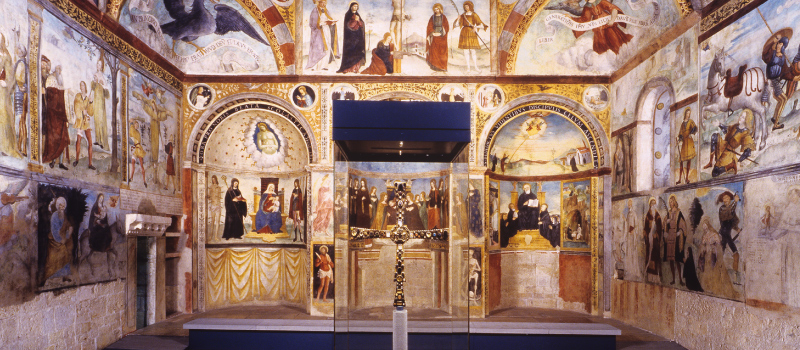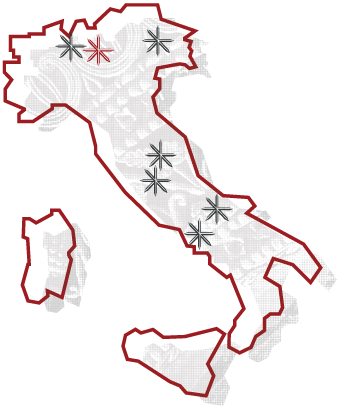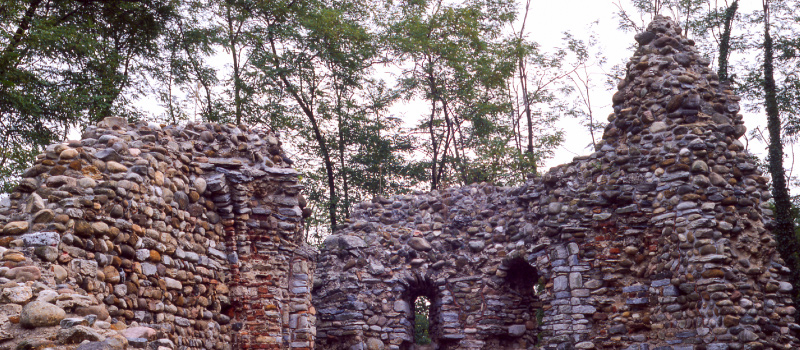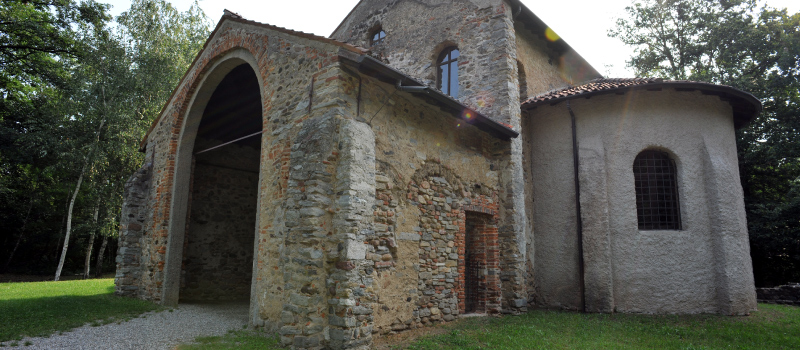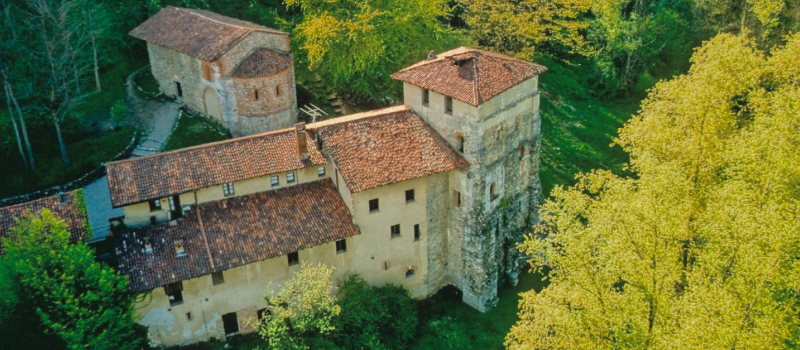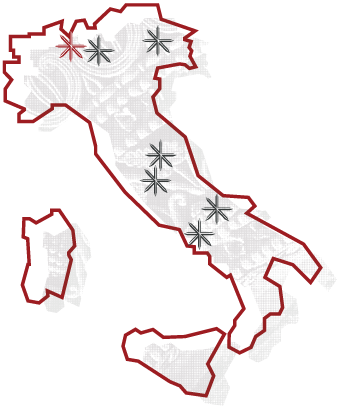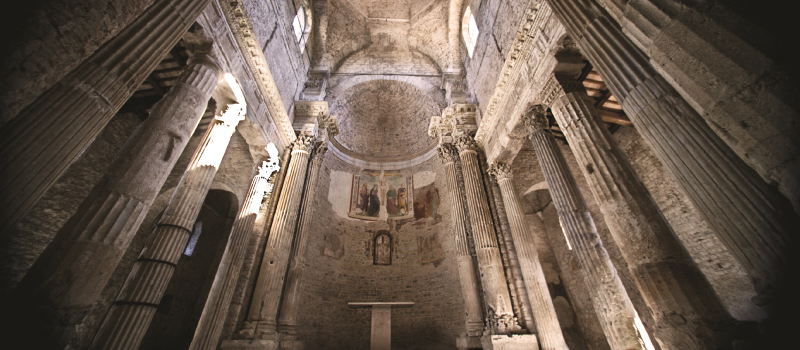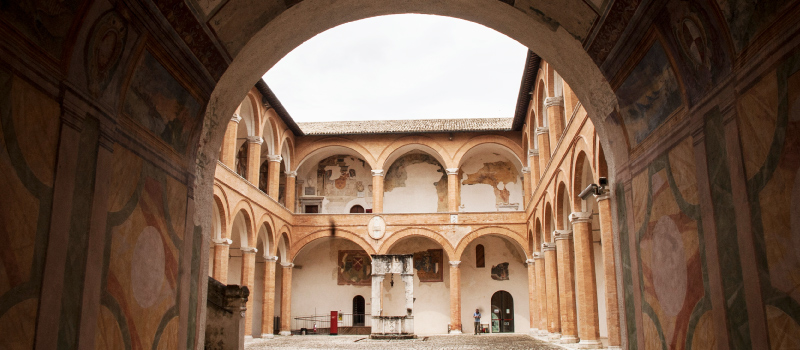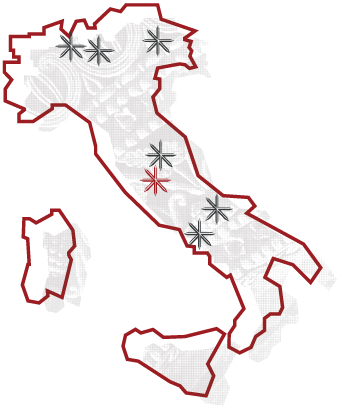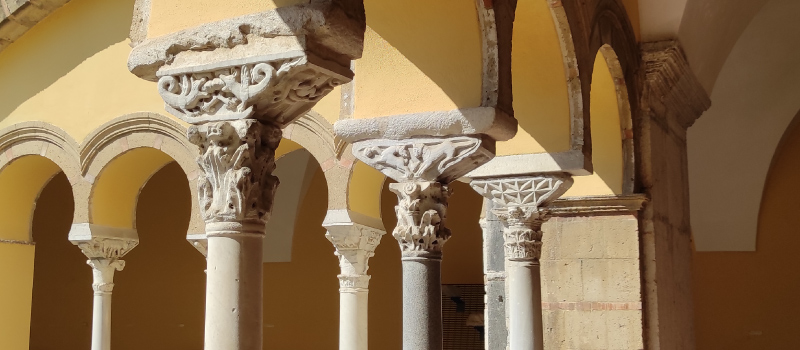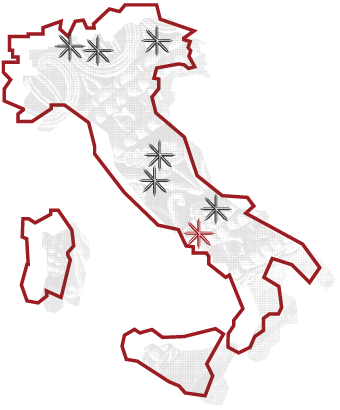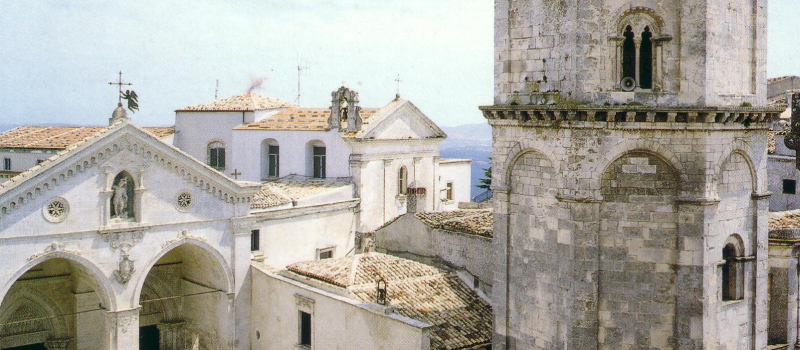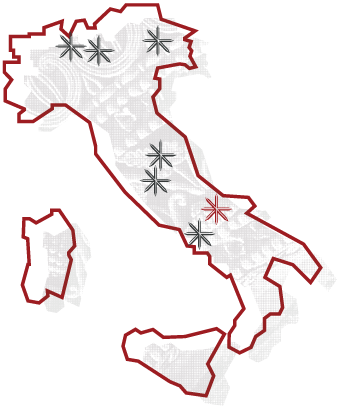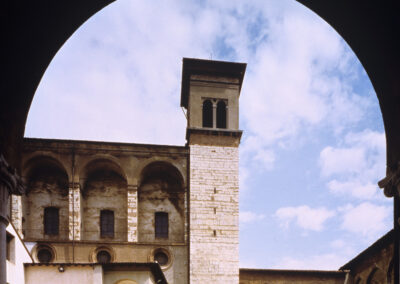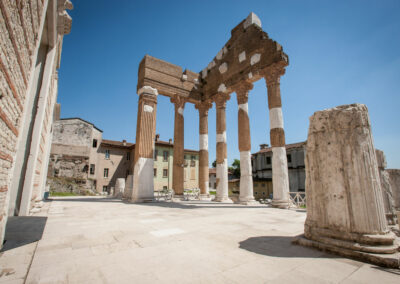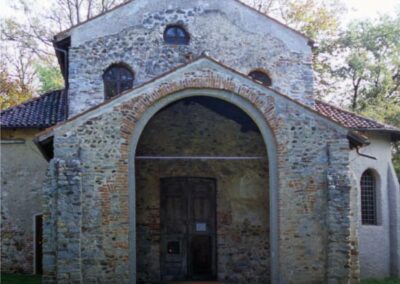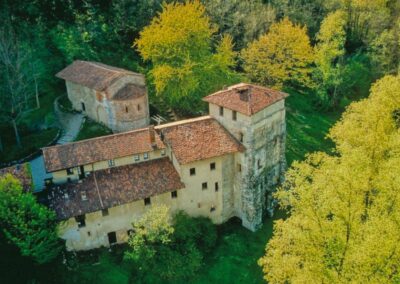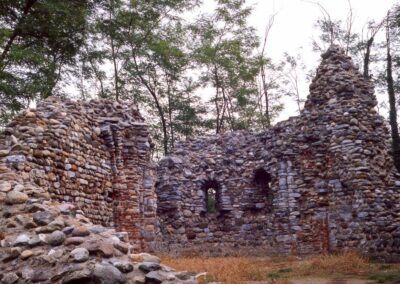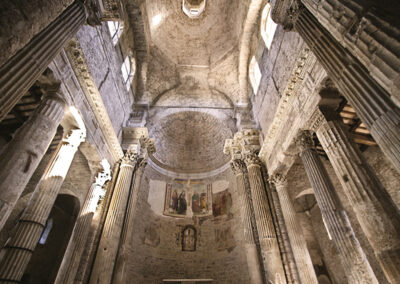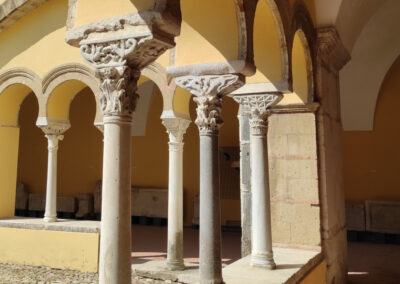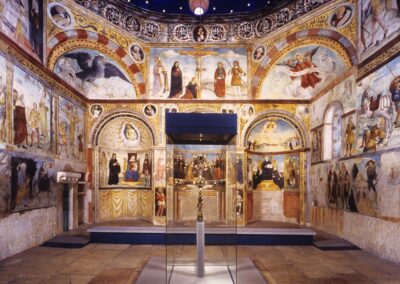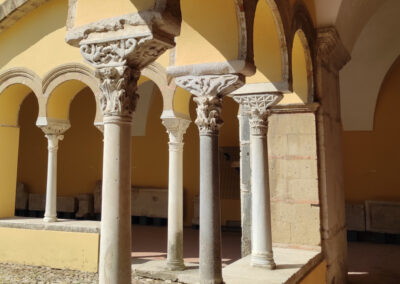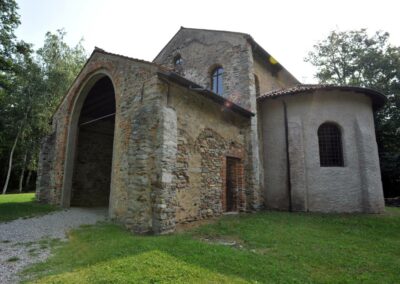Flavia Sebrio
Flavia sebrio. Lombard Castelseprio, military garrison and seat of power.
Castelseprio’s fortune was determined by its strategic position in the middle Olona Valley, controlling riverine and terrestrial routes towards the Alpine passes and central Europe. The military structures founded in Late Antiquity (4th – 5th century) were reinforced under the Goths (5th – 6th century) with the birth of the castrum, surrounded by an imposing turreted town wall that extended to include Torba in the valley bottom.
Under Lombard rule, from the late 6th century until 774, in addition to being a military garrison Castrum Sibrium was also the juridical and administrative centre of the Giudicaria del Seprio, becoming the seat of a powerful aristocracy of knights and high-ranking officials of whom survives scarce but important evidence, such as the Wideramn funerary inscription. Castelseprio currently lacks the abundant weapons found as grave goods at other Lombard sites; these are illustrated in the exhibition by finds from the cemetery of Nosate (MI) thanks to collaboration with the Civico Museo Archeologico di Milano.
The most significant indication of Sibrium‘s central role and its direct contacts with the royal court consists of the rare coins minted by the Lombards and currently on display in the Museo Archeologico di Milano: the late 6th century gold pseudo-imperial tremissis bearing the name of Justinian I, and the gold starred tremisses of King Desiderius (756-774) bearing the legend Flavia Sebrio, which qualifies Sibrium as a “royal town”.
Date: 02/02/2019 – 21/07/2019
Region: Lombardia
Town: Castelseprio (VA) e Milano
Subject: numismatics
The “Lombards in the Limelight” project was organized to make known to a wider public the museums of the seven towns in the serial site (Cividale del Friuli, Brescia, Castelseprio-Torba, Spoleto, Campello sul Clitunno, Benevento, Monte Sant’Angelo), in collaboration with one another and several national museums with Lombard/Early Medieval sections.
This encounter involves 7 exhibition themes, which are divided between the 13 museums listed below.
Located in a splendid natural setting, the Castelseprio Archaeological Park includes the remains of a castrum (fortification) that was founded in Late Antiquity, expanded notably in Lombard and Carolingian times, and was destroyed in 1287 by Archbishop Ottone Visconti’s army.
Civico Museo Archeologico di Milano
The Milan Civico Museo Archeologico features the well-preserved remains of Roman and medieval standing buildings, and houses an abundant collection of Etruscan, Greek and Early Medieval objects, as well as finds from excavations conducted in Milan since the 19th century.
Coins, passing from hand to hand. Quickly, as fast as wealth that changes master. Metal discs that glint between the fingers, shiny and seductive.
On the faces of the coins are the faces of the lords who rule the world, the names of kings and emperors. Coins come to every corner of the empire. And even further, in lands now controlled by the barbarians, the Lombards. Because they too, who are no longer subjects of the Roman East, and have taken Italy and dominate it, need these metal discs to hold a kingdom. Coins can tell many stories.
These from Castelseprio tell of urban Lombards, those who inhabit within the walls of the castrum – which, like a falcon, looks down from above and guards a rich land. Notables of the kingdom, refined as Romans, accustomed to comfortable houses, well-decorated churches, sumptuous garments and tombs with elegant grave goods. The severe face of Justinian engraved on the tremissis passed between their fingers, the grimacing face annoyed by the barbarian hands that touched it or about the correctness of the legend.
But Flavia Seprio was a garrison and also a meeting point for different influences, a crossroads of goods, men and ideas. In the Lombard mints, the Byzantine tremisses were a model and an inspiration. Justinian’s head was gradually replaced, together with more correct legends recording the names of the new rulers, up to Desiderius – the last, whom Charlemagne was to drive from his throne. New owners then walked in the streets of the castrum, and new precious metal discs replaced those of the Lombards. As fast as coins, kingdoms too change hands.
Mariangela Galatea Vaglio

